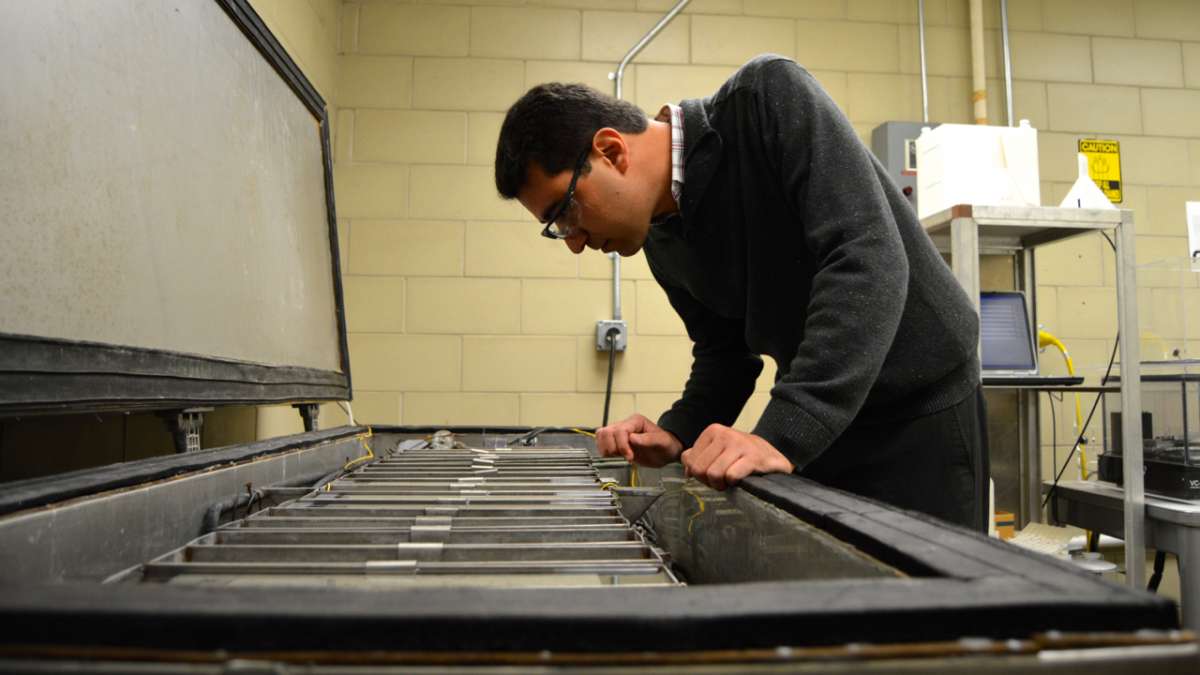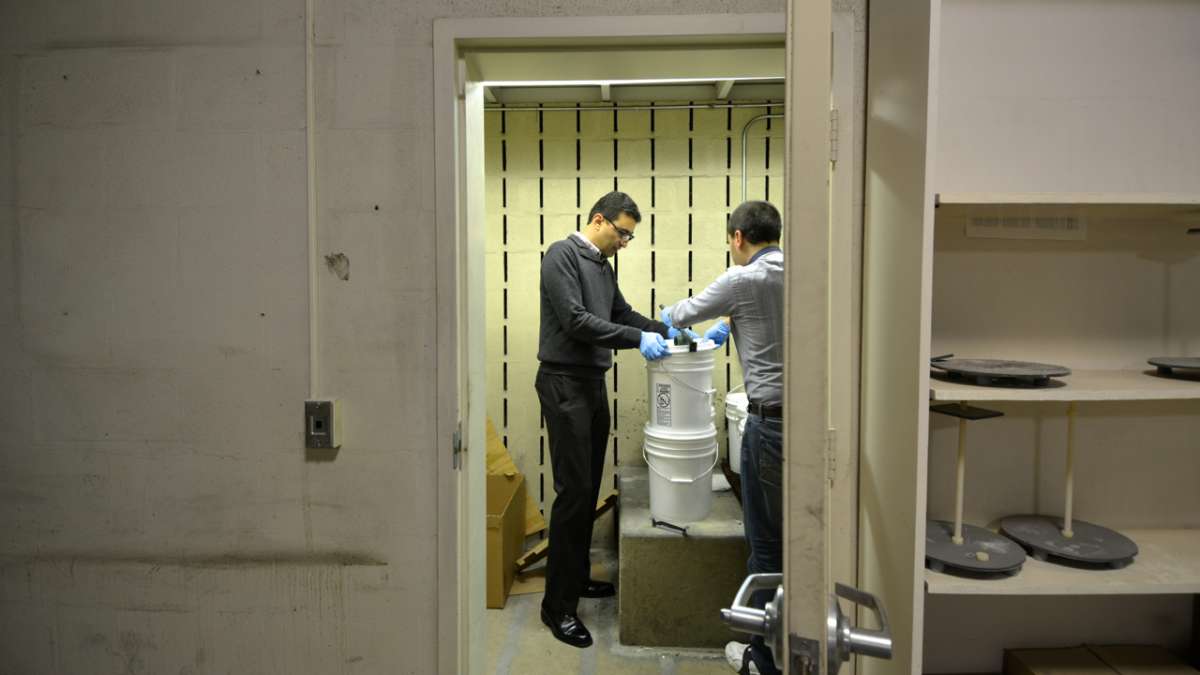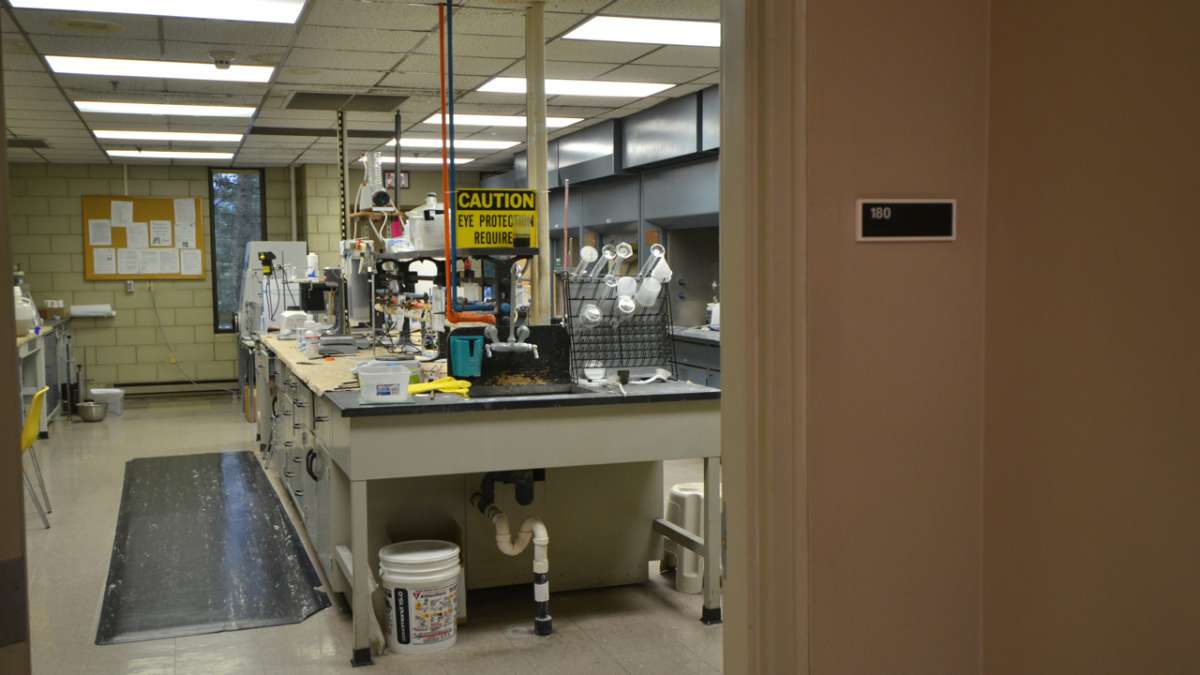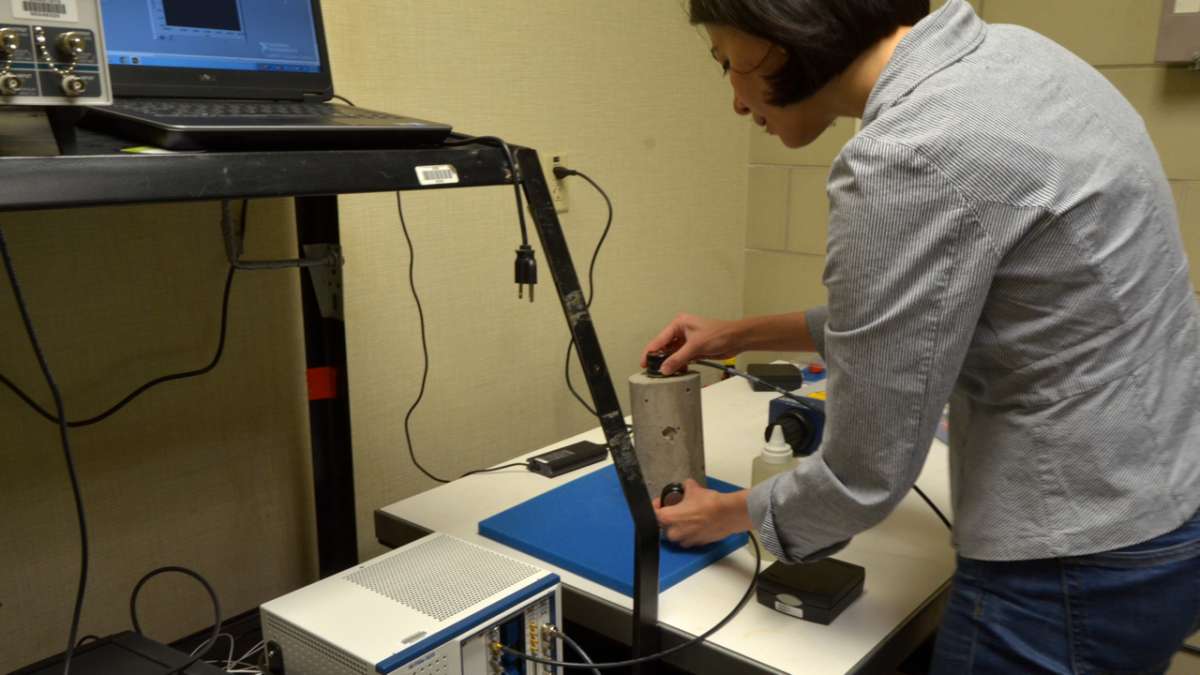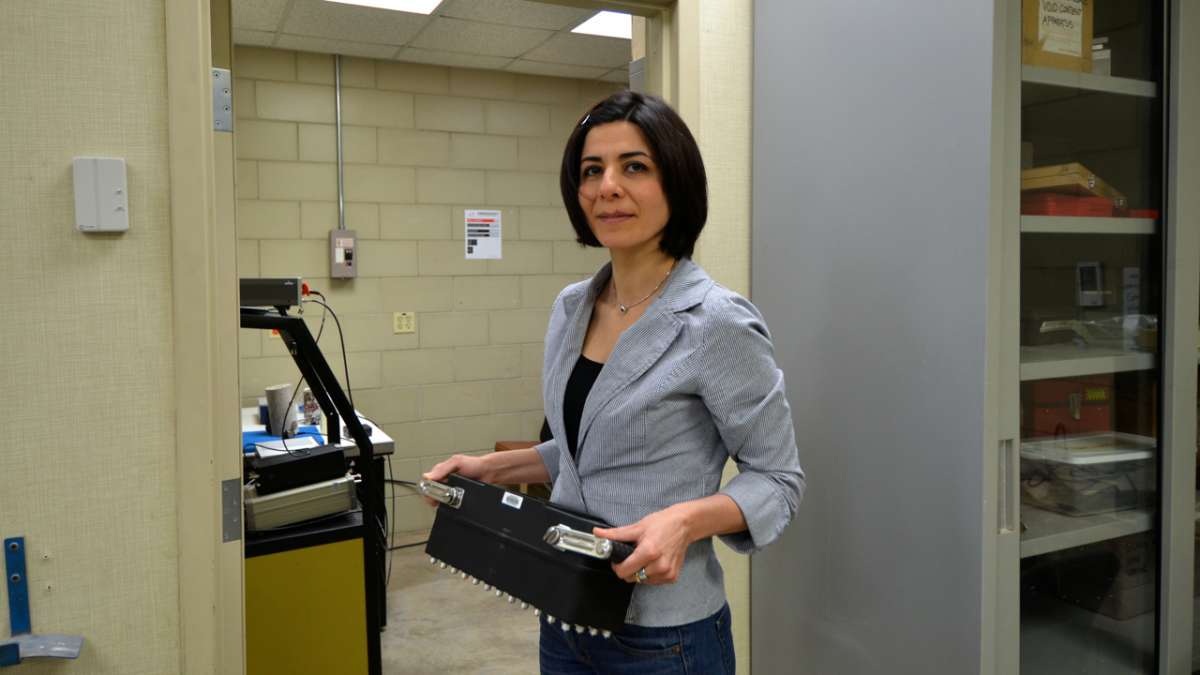At Penn State, researchers looking for the next big thing in infrastructure
ListenThey’re trying to make it safer, less expensive, and longer-lasting.
On the surface, Dr. Farshad Rajabipour’s job might not sound that interesting. He’s an associate professor of civil engineering at Penn State. And he studies concrete.
“It’s actually a material that’s used pretty much everywhere in the world,” Rajabipour said. “It’s so common that people don’t notice it.”
Concrete is in the roads and bridges you drive over, the buildings where you live and work, and even the pipes that transport your city’s stormwater.
Rajabipour works at Penn State’s Civil Infrastructure Testing and Evaluation Lab. Researchers at the lab are devoted to making infrastructure safer, less expensive, and longer-lasting.
Pennsylvania’s infrastructure is not in the best shape. The state has the second highest percentage of structurally deficient bridges in the country, after Rhode Island. That means those bridges need repairs or they may be weight restricted or closed. And about 44 percent of the state’s roads were rated in “fair” or “poor” condition in 2013.
An elixir for bridges
Rajabipour’s latest project could help the state. It’s funded by the National Science Foundation and the goal is to prevent a chemical reaction that happens in the ingredients in concrete: cement, rocks, and water. It’s called the alkali-silica reaction, and over time, it makes bridges and other structures crack.
The researchers are trying to come up with a sort of elixir: a substance they can add to concrete to prevent this chemical reaction, or stop it from causing more damage.
Rajabipour walks into a room filled with buckets of concrete samples, all treated with different materials, like natural clays and byproducts of aluminum manufacturing.
The researchers keep the room hot—about 100 degrees Fahrenheit. That helps them speed up the chemical reaction.
“It’s kind of like when you keep food outside the refrigerator, it will go bad faster,” he said.
That means it’ll take the researchers only a few months to predict if their concoctions will allow us to make bridges and other structures last decades longer than they do now.
There’s no word on the results yet. But the state has a $4.7 billion budget to fix and build road and bridges in the coming fiscal year. Extending the life of that infrastructure could save a lot of money.
Tracking railroad safety
Penn State researchers are also looking for ways to catch safety problems before accidents happen.
For instance, on railroads.
A brief engineering lesson: underneath railroad tracks, there’s a layer of rocks. Those rocks will move a little when trains pass over the tracks, says Dr. Hai Huang, assistant professor of engineering at Penn State.
We’re only talking about a couple millimeters a month, Huang says. But if the rocks move too much, that can cause less comfortable rides, he says.
If the movement is severe enough, it could cause structural damage or even derailment, says Dr. Tong Qiu, assistant professor of civil engineering at Penn State.
Railroad companies check for these kinds of problems during periodic, in-person inspections of the tracks.
But Dr. Huang and Dr. Qiu are testing a device to monitor railroad track safety in real time. It’s called a “smart rock”: a 3-D printed rock with electronics inside.
The smart rock will sit underneath a section of train tracks and tell researchers how much it’s moving. If it’s moving a lot, that’ll be an early warning that the rock layer is rearranging and might need repairs, Huang says.
To test the smart rock, the researchers will use a machine that looks like two transformer arms coming down on a metal beam that’s resting on top of a bin of rocks. It mimics the force of a train going over railroad tracks.
The project, part of Penn State Altoona’s rail transportation engineering program, is funded by the Federal Railroad Administration.
The lab’s importance
Researchers at Penn State’s lab are looking for ways to make roads last longer, and working with sensors that allow agencies to monitor the health of their bridges remotely, among other projects.
PennDOT also funds research at the lab. Michael Bonini, research manager at the agency, says the lab’s work is really valuable to the state. “University faculty members understand the transportation system within Pennsylvania so they have an appreciation of the challenges we face trying to maintain and operate the system,” Bonini says.
That’s why even though there are national labs that study infrastructure, he says it helps to have one close to home.
See the lab in action in Keystone Crossroads’ TV show on bridges.
WHYY is your source for fact-based, in-depth journalism and information. As a nonprofit organization, we rely on financial support from readers like you. Please give today.



